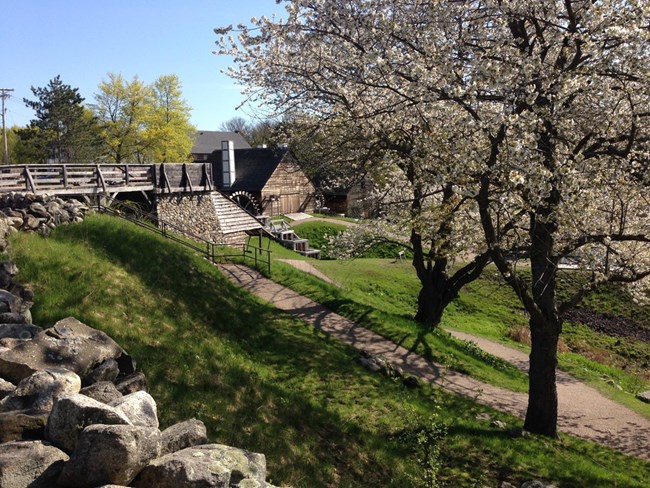
NPS Photo
Overview
Saugus Iron Works National Historic Site contains over 160 species of plants. Approximately 89 species of these plants are considered native to the area. Several species of trees can be found along the Saugus River within the riparian woodlands. Examples include white and scarlet oaks, American beech, shagbark hickory, black walnut, black cherry, black willow, red and silver maples, and boxelder. At least 27 species of plants are found within the wetland areas surrounding the Saugus River. Many of these plants are common throughout the marsh, such as narrow-leaved cattail. The tall wetland vegetation provides excellent habitat for nesting red-wing blackbirds and other bird species and breeding fish, such as the fourspine stickleback.The Saugus Iron Works National Historic Site Vegetation Inventory Project delivers many geospatial and vegetation data products, including an in-depth project report discussing methods and results, which include descriptions to vegetation associations, field keys to vegetation associations, map classification, and map-class descriptions. The suite of products also includes a database of vegetation plots, and accuracy assessment (AA) sites; digital images of field sites; digital aerial imagery; digital maps; a contingency table listing AA results; and a geodatabase of vegetation, field sites (vegetation plots, and AA sites), aerial imagery, project boundary, and metadata.
Products
The products of vegetation mapping projects are stored and managed in the National Park Service's Data Store, a repository for documents and publications relating to park resources. From the highlighted items below, click on the type of information you are looking for.
Last updated: October 19, 2018
